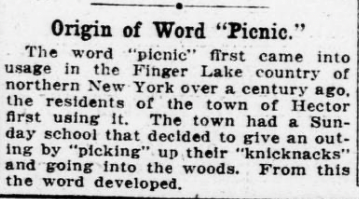
This interesting article found in a newspaper from 1901 describes the early process of making pine needle essential oil.
This article is placed here for research purposes only. StrangeAgo does not support any medical claims made in the article.

Pine Forests By Bottle
Essential Oil from the Needles Makes a New Medicine from Which Much is Expected
The balmy and invigorating odor of pine forests may now be bought by the bottle, say the New York World.
With the aid of this new product, one may enjoy in his own home many of the advantages of life in the forests. The new medicine, for which many virtues are claimed, is known as the essential oil of pine needles. A large factory for preparing it has been established recently in Oregon. The oil is claimed to be a cure for insomnia, besides being excellent for throat and lung troubles.
It takes 2,000 pounds of the pine needles to make ten pounds of the essential oil. All the virtues of the forests are said to be condensed in this potion.
It is well known that people troubled with insomnia have been cured by sleeping on beds of pine needles, and that weak throats and lungs have been healed and strengthened by merely breathing the odor of the pines. The new medicine is supposed to have these valuable medicinal qualities in condensed form.
An inferior quality of this oil was made in Germany before the American factory was started. The German government, however, will not allow the factory to use any but the pine needles which have fallen to the ground.
The needles which grow in Oregon are 20 and even 30 inches long, while the German needles are but two inches long. The American product is far superior to the German, and great results are expected of it.
There is already a great demand for the American oil. Its manufacture has been discouraged by the government until recently, but all legislative restrictions have not been removed. The forestry department has been investigating the work for some time. It was at first believed that the forests might suffer from losing the needles, but it was finally decided that since the main object of the forests was to raise timber rather than foliage, the work would be more beneficial than otherwise.
The needles are gathered in two crops every year. The first crop is taken in April and the second in October. Of the two crops the first is the lighter. The leaves of the young trees are preferred, as they seem to yield a better class of oil.
The needles are stripped from the trees by women and men, who are paid for their work as the hop-pickers are paid in the east. The average price paid by the manufacturers is 25 cents a hundred pounds. The pickers make on the average $1.50 a day.
The needles are first subjected to a mild crushing and are then boiled, and the oil is finally distilled. The by-product of the process is also very valuable. The fiber which remains after the oil has been removed may by utilized in several ways. It is elastic and strong and can be woven.
When mixed with other substances it makes excellent material for mattresses and pillows, since it still retains the odor of the pine forests.
Source: The Coconino sun. [microfilm reel] (Flagstaff, Ariz.), 12 Oct. 1901.


